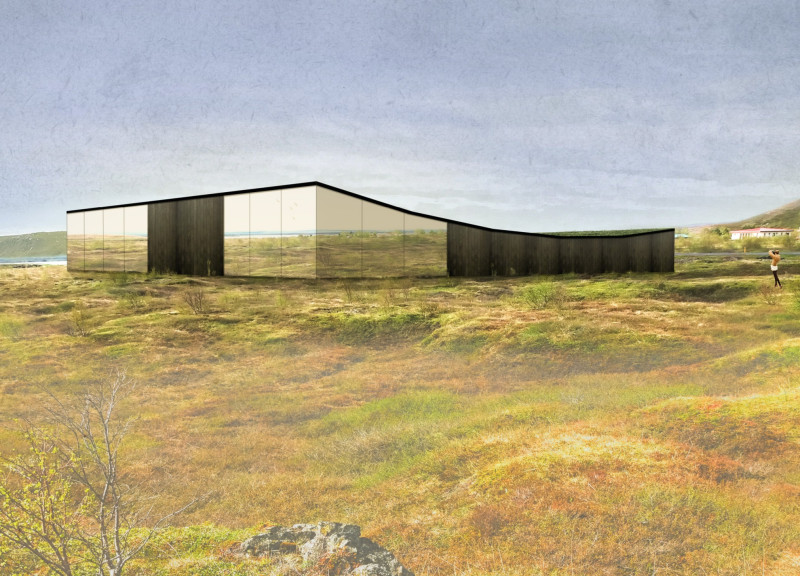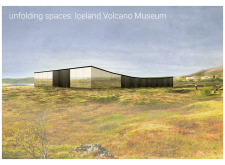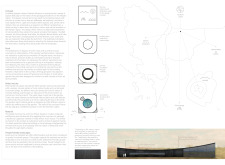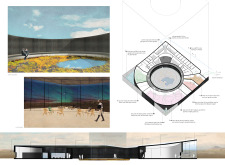5 key facts about this project
The architectural form of the museum embodies the fluidity of natural forces, incorporating linear and curved shapes that mimic geological formations. Its relationship to the surrounding landscape is intentional; large openings and reflective surfaces allow for interactions with the sky and the volcanic terrain. The building is constructed primarily from sustainable materials such as local timber, concrete, and green roofs, which promote ecological harmony and adhere to sustainable practices in architecture.
Unique Design Approaches
The museum stands out due to its thoughtful approach to blending educational spaces with natural landscapes. Each part of the design serves multiple purposes, seamlessly integrating visitor engagement with the museum's educational mission. The use of themed areas—rock, water, and sky—demonstrates a comprehensive understanding of how architecture can facilitate learning through experience. The incorporation of a silent garden creates a tranquil space for reflection and contemplation, inviting visitors to connect with nature amid exhibits.
The exterior cladding features local timber treated with Shou Sugi Ban, enhancing the durability while providing a distinctive aesthetic. This technique echoes the volcanic themes by resembling charred wood, creating a visual dialogue between architecture and its environment. Furthermore, the museum's layout emphasizes accessibility and flow, encouraging visitors to traverse through various exhibition spaces while maintaining views of the surrounding landscape.
Visitor Experience and Engagement
The Iceland Volcano Museum is designed to facilitate an engaging visitor experience by carefully considering the functional aspects of the building. Entry points and circulation pathways are strategically placed to enhance the flow of foot traffic, while spaces for exhibitions and amenities are integrated seamlessly. Large windows and an observation point allow for panoramic views, enriching the educational content with real-world geological contexts.
The museum also prioritizes sustainability through landscape integration, using a green roof to enhance energy efficiency and biodiversity. This connection to the landscape reinforces the narrative surrounding the museum's purpose—an exploration of the natural world and its volcanic activity.
For more comprehensive insights into the architectural plans, sections, designs, and ideas of the Iceland Volcano Museum, readers are encouraged to explore the project presentation. This examination will provide a deeper understanding of the decision-making processes and design choices that define this unique architectural endeavor.


























